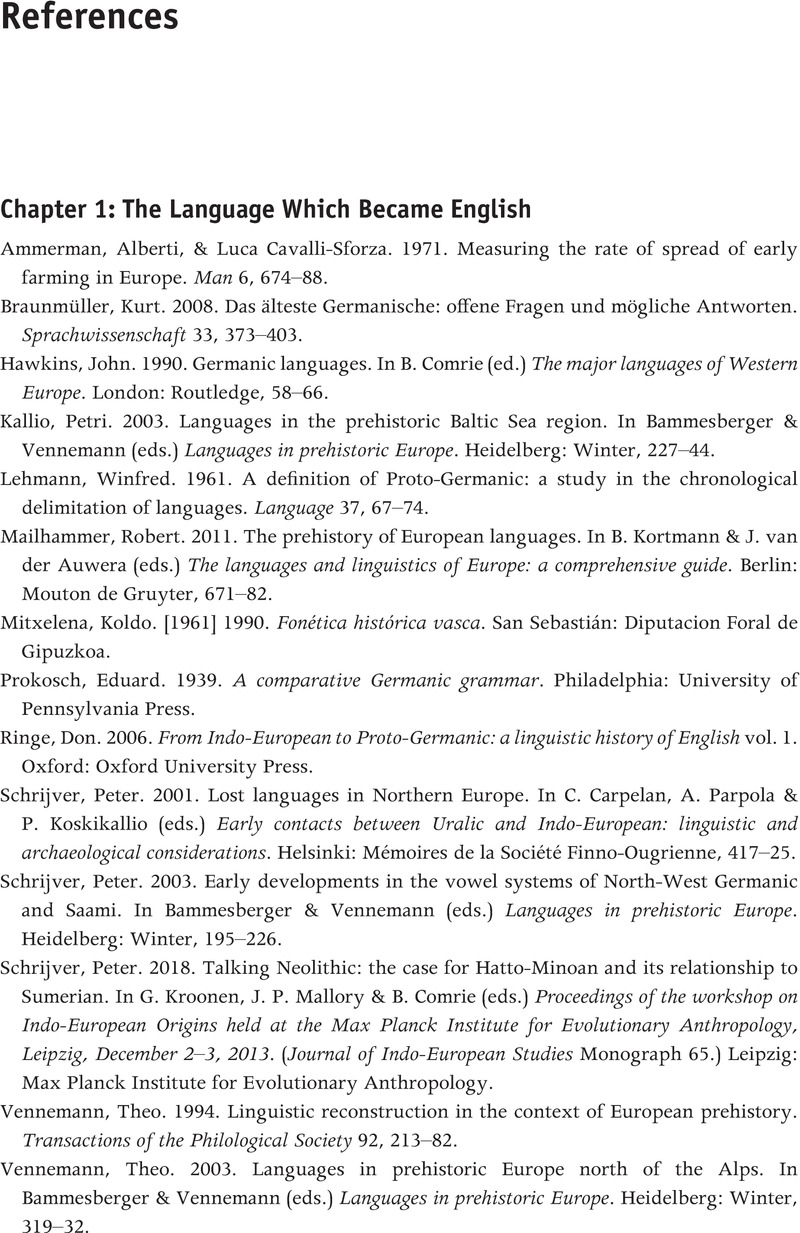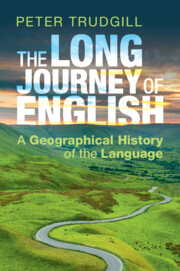Book contents
- The Long Journey of English
- The Long Journey of English
- Copyright page
- Dedication
- Contents
- Figures and Maps
- Acknowledgements
- Prologue: A View from the Birthplace
- 1 Where It All Started: The Language Which Became English
- 2 The Journey Begins: The First Movement South
- 3 Interlude: A View from the Celtic Island
- 4 Heading West Again: The North Sea Crossing, 400–600
- 5 Anglo-Saxons and Celts in the British Highlands, 600–800
- 6 And Further West: Across the Irish Sea, 800–1200
- 7 Atlantic Crossing: On to the Americas, 1600–1800
- 8 Onwards to the Pacific Shore
- 9 Across the Equator: Into the Southern Hemisphere, 1800–1900
- 10 Some Turning Back: English in Retreat
- 11 Meanwhile … Britain and the British Isles from 1600
- 12 Transcultural Diffusion: The New Native Englishes
- Epilogue: Sixteen Hundred Years On
- References
- Index
- References
References
Published online by Cambridge University Press: 25 May 2023
- The Long Journey of English
- The Long Journey of English
- Copyright page
- Dedication
- Contents
- Figures and Maps
- Acknowledgements
- Prologue: A View from the Birthplace
- 1 Where It All Started: The Language Which Became English
- 2 The Journey Begins: The First Movement South
- 3 Interlude: A View from the Celtic Island
- 4 Heading West Again: The North Sea Crossing, 400–600
- 5 Anglo-Saxons and Celts in the British Highlands, 600–800
- 6 And Further West: Across the Irish Sea, 800–1200
- 7 Atlantic Crossing: On to the Americas, 1600–1800
- 8 Onwards to the Pacific Shore
- 9 Across the Equator: Into the Southern Hemisphere, 1800–1900
- 10 Some Turning Back: English in Retreat
- 11 Meanwhile … Britain and the British Isles from 1600
- 12 Transcultural Diffusion: The New Native Englishes
- Epilogue: Sixteen Hundred Years On
- References
- Index
- References
Summary

- Type
- Chapter
- Information
- The Long Journey of EnglishA Geographical History of the Language, pp. 166 - 176Publisher: Cambridge University PressPrint publication year: 2023

